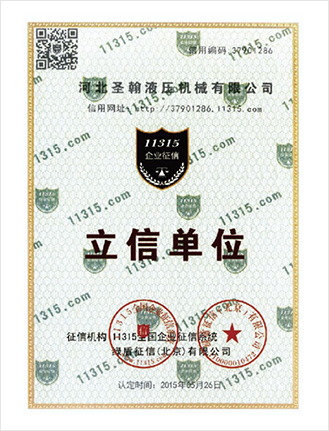Dec . 09, 2024 15:59 Back to list
hydraulic cylinder fittings product
Hydraulic Cylinder Fittings Essential Components for Efficient Hydraulic Systems
Hydraulic systems are critical to a vast range of industrial and mobile applications, from construction machinery to automotive equipment. At the heart of these systems lies the hydraulic cylinder, a vital component responsible for converting hydraulic energy into mechanical motion. However, the efficiency and functionality of hydraulic cylinders hinge significantly on their fittings. In this article, we’ll explore the various types of hydraulic cylinder fittings, their significance, and best practices for their use and maintenance.
What Are Hydraulic Cylinder Fittings?
Hydraulic cylinder fittings are connectors that facilitate the attachment of hoses, pipes, and accessories to hydraulic cylinders. These fittings play a crucial role in the seamless transmission of hydraulic fluid, ensuring that the system maintains appropriate pressure and avoids leaks. The correct fittings not only enhance the performance of hydraulic cylinders but also contribute to the overall safety and longevity of hydraulic systems.
Types of Hydraulic Cylinder Fittings
1. Threaded Fittings These are among the most common types of hydraulic fittings. They feature internal or external threads designed to screw into corresponding threaded ports. Threaded fittings are available in various designs, materials, and pressure ratings, making them versatile for different applications.
2. Flared Fittings Flared fittings have a cone-shaped end that allows them to form a tight seal when connected to a flared tube. This design reduces the likelihood of leaks and is especially useful in high-pressure applications.
3. Quick Connectors Quick connectors allow for rapid attachment and detachment of hydraulic hoses without the need for tools. This convenience is indispensable in applications that require frequent changes or adjustments, such as in mobile machinery.
4. Banjo Fittings These fittings have a distinctive design featuring a hole in the center that allows for a bolt to pass through. This design is often used in applications where space is limited and is especially common in automotive hydraulics.
5. Socket Weld and Butt Weld Fittings These fittings are welded directly to the hydraulic lines, providing a strong and permanent connection. They are typically used in high-pressure systems where vibrational strength is necessary.
Importance of Quality Fittings
hydraulic cylinder fittings product

The quality of hydraulic cylinder fittings is paramount. Inferior fittings can lead to several issues, including leaks, pressure drops, and even catastrophic failures. Therefore, it is essential to select fittings made from high-quality materials that can withstand the specific pressure and temperature requirements of your hydraulic system. Common materials used for hydraulic fittings include steel, stainless steel, aluminum, and plastic, each offering unique benefits suited to particular environments.
Maintenance and Best Practices
To ensure the longevity and reliability of hydraulic cylinder fittings, regular maintenance is crucial. Here are some best practices
1. Routine Inspections Regularly inspect fittings for signs of wear, corrosion, or damage. Replace any fittings that show signs of deterioration to prevent leaks and maintain system performance.
2. Proper Torque Specifications Always adhere to the manufacturer’s recommended torque specifications when installing fittings. Over-tightening can cause damage to threads and lead to failure under pressure.
3. Use the Right Tools Employ the appropriate tools for installation and removal of fittings. Using makeshift tools can compromise the integrity of fittings and lead to leaks.
4. Cleanliness is Key Ensure that the connection points are clean before installing fittings. Contaminants can interfere with the sealing surfaces, leading to potential leaks.
5. Fluid Compatibility Make sure that the materials of the fittings are compatible with the hydraulic fluid being used. Incompatible materials can degrade over time, compromising the integrity of the fitting.
Conclusion
Hydraulic cylinder fittings, though often overlooked, are indispensable components that ensure the effectiveness and reliability of hydraulic systems. By understanding the various types of fittings available and their importance, as well as adhering to best practices for maintenance and installation, users can significantly enhance the performance of hydraulic cylinders. As industries continue to evolve, investing in high-quality hydraulic cylinder fittings will remain a key factor in achieving operational excellence and ensuring the safe and efficient functioning of hydraulic systems.
-
Fork Lift Power Units - Hebei Shenghan | Efficiency, Reliability
NewsJul.13,2025
-
1.5-Ton Turbocharged Cylinder-Hebei Shenghan|Hydraulic Solution,Energy Efficiency
NewsJul.13,2025
-
Auto Hoist Power Units-Hebei Shenghan|Efficiency&Industrial Lifting
NewsJul.13,2025
-
Double Acting Power Units-Hebei Shenghan|Hydraulic Solutions,Industrial Efficiency
NewsJul.13,2025
-
1.5 Ton Lifting Cylinder 70/82-40-290-535 - High-Performance Hydraulic Solution | Hebei Shenghan
NewsJul.13,2025
-
Fork Lift Power Units - Hebei Shenghan | Efficiency&Reliability
NewsJul.13,2025
